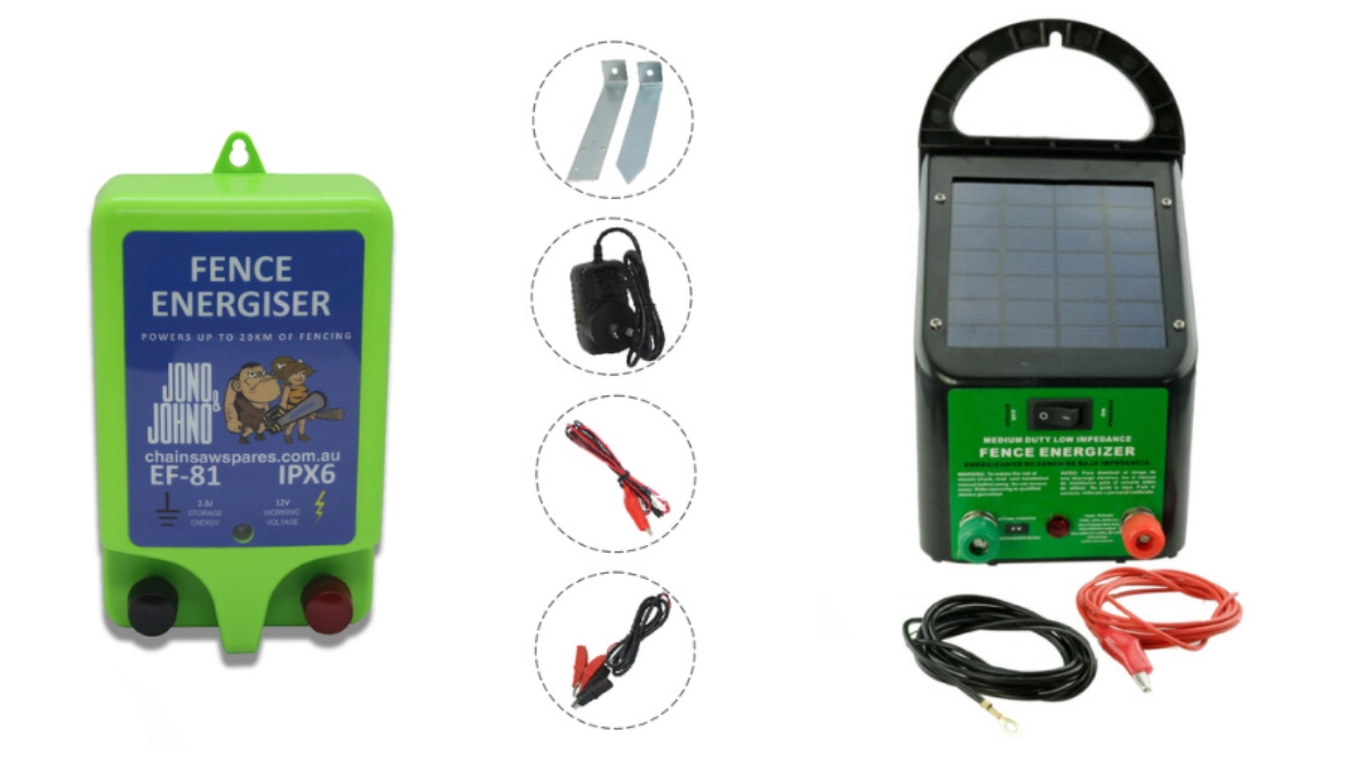Installing an electric fence energiser can seem straightforward, but missing key details during setup often leads to poor performance, wasted time, or safety concerns. The most common mistakes to avoid are improper grounding, choosing an inadequate energiser, and ignoring safety clearances—all of which can render even the best fences ineffective. Whether selecting a standard or a solar energizer for electric fence systems, proper installation ensures consistent voltage and reliable operation.
Standard plug-in energizers are well-suited for locations with easy access to power outlets, giving steady performance with minimal weather impact. In contrast, solar energizers are ideal for remote areas where grid power isn’t available, providing flexibility and energy efficiency but requiring careful panel placement for optimal sunlight exposure. Understanding these differences helps users match the energizer type to their property’s specific layout and power availability.
Mistakes such as using too few ground rods, placing them too close to other ground systems, or failing to use quality clamps can severely reduce efficiency. Adequate wire tension, clear offsets from power lines, and proper enclosure of all connections further prevent unnecessary issues. Addressing these areas protects both animals and property, making the investment in an electric fence energiser worthwhile.
Key Takeaways
- Avoid critical mistakes when installing an electric fence energiser.
- Address overlooked details to ensure safety and effectiveness.
- Correct installation maximizes the value of any energiser, including solar models.
Critical Mistakes to Avoid With Electric Fence Energisers
Installing an electric fence energiser correctly is important for fence performance and safety. Mistakes in grounding, energiser selection, or using the wrong insulators can cause power loss, animal escapes, or system failure.
Improper Earth Grounding Techniques
A common mistake is inadequate or improper earth grounding, which prevents the fence from delivering a consistent shock. Electric fencing relies on an effective return circuit through ground rods. If these rods are too short, too few, corroded, or spaced too closely, the earth connection becomes weak.
Multiple galvanized ground rods, each at least 1.5–2 meters long and spaced several meters apart, are usually required for most fences. Dry, rocky, or sandy soils demand extra attention, as poor conductivity in such ground can severely impact performance. Connections between the energiser, ground rods, and wires must be clean, tight, and free from rust. Using insufficient ground wire gauge or locating rods near building foundations, where soil may be dry or insulated, further reduces effectiveness. Proper ground placement away from utility grounds is also important to prevent electrical interference.
Incorrect Selection of Energiser Size and Power
Choosing an energiser that is too small for the fence length or type is a critical error. An underpowered energiser cannot maintain a high enough voltage, especially if the electric fence runs over long distances, covers rugged terrain, or is overgrown with vegetation.
Manufacturers provide recommendations for maximum fence length and the number of wires each energiser can support. It’s important to select a model rated for a larger fence than initially planned, accounting for future expansion and possible vegetation contact.
Inadequate Use and Placement of Insulators
Incorrect use or placement of insulators leads to energy leaks and short circuits. Insulators prevent electric fencing from touching wooden posts or metal supports, both of which can ground the current and weaken the shock. Cracked, UV-damaged, or poor-quality insulators allow current to escape. It’s also a mistake to use mismatched insulators on corners, gates, or tension points, as these areas experience the most stress and movement. Insulators should be inspected regularly for wear, damage, and secure fitting.
Proper installation involves using the correct style of insulator for each type of post and regularly checking for signs of arc marks or burns. Avoiding bends or pinches in the wire at insulator contact points also helps maintain consistent energy flow throughout the electric fence.
Additional Installation Problems and Overlooked Details
Attention to detail can help prevent performance and safety issues with electric fences. Proper wiring, correct solar panel positioning, and keeping vegetation away from live wires all have a significant impact on the reliability of an electric fence system.
Neglecting Proper Wiring and Lead-Out Practices
Improper wiring is a frequent cause of weak or inconsistent voltage on electric fences. Lead-out wires should have a suitable gauge to handle the required current and minimize resistance. Undersized wire or poor connections may result in voltage loss, leaving the fence ineffective.
Key considerations:
- Always use galvanized or high-quality fence wire for durability and conductivity.
- Check that all joints are secure and corrosion-free to prevent arcing or power losses.
- Use insulated cable for underground lead-out sections to prevent short circuits.
Installing inadequate insulators or failing to use them at all can lead to power leakage into posts, especially wooden or metal ones. This both wastes energy and reduces the fence’s deterrence.
Faulty Solar Panel Installation or Positioning
Solar panels play a important role in battery-powered energisers. If mounted in a shaded area or at the wrong angle, panel output drops significantly. This means the energiser may not receive enough power to operate the fence effectively, particularly in cloudy weather.
Panels should always be oriented to maximize direct sunlight exposure throughout the day.
Recommendations:
- Mount solar panels where there is minimal shading from trees, buildings, or other obstacles.
- Adjust the tilt angle to match local latitude for optimal year-round sun capture.
- Routinely clean panel surfaces to remove dust or debris that can reduce efficiency.
Ensuring the charge controller and connections are properly rated for fence energiser use is also important. Substandard equipment can result in overcharging or system failure.
Conclusion
Installing an electric fence energiser requires attention to key details like grounding, correct wire and insulator choices, and avoiding poor connections. These steps are essential for reliable fence performance.
Proper installation prevents power loss, reduces maintenance, and improves safety for people and animals. Addressing common mistakes listed in this article helps avoid costly repairs and system failures. With careful planning and adherence to best practices, an electric fence energiser can operate efficiently for years.







